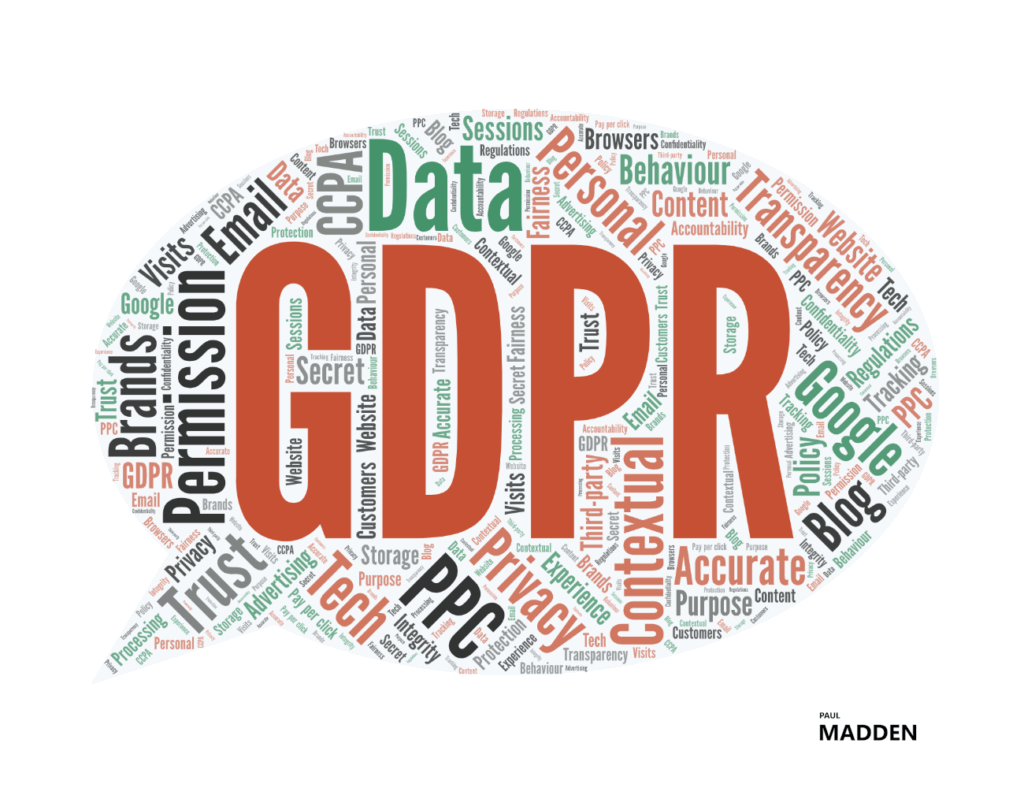
Cookies — especially third-party cookies — are near the end of their shelf life in marketing because of growing privacy concerns, stricter regulations (like GDPR and CCPA) and major tech companies (like Google and Apple) phasing them out to protect user data. Consumers are demanding more control over their personal information, and browsers are responding by limiting cookie tracking. As a result, marketers are shifting toward first-party data, privacy-first strategies (consent-driven, minimal data collection) and new alternatives like contextual advertising and data clean rooms. This presents a fresh challenge for small business marketing.
UPDATE: As of April 2025, Google has confirmed that it now will not cease to use third-party cookies. It seems they will slowly phase-out cookies instead. It seems like the rumoured pressure from big advertisers has swayed their decision to halt or at least stall progress on the Privacy Sandbox initiative. It’s a tricky balance trying to satisfy advertisers, privacy regulators and end users. It will be interesting to see how it plays out but the direction is still the same, cookies are on the way out.

The phasing out of third-party cookies — originally due completed by Google Chrome in 2024 — presents a unique challenge for SMEs low on marketing and operational bandwidth. Without cookies, targeting and personalisation become harder, but first-party data offers a path forward. In this post, we look at how small businesses and freelancers can adapt and build a sustainable yet low-budget marketing strategy.
Third-party cookies once enabled affordable, precise ad targeting, levelling the playing field somewhat for SMEs. Now however, privacy laws (GDPR, CCPA) and consumer demand for transparency have eliminated them, leaving SMEs with stretched budgets and small teams scrambling. Unlike large enterprises, SMEs often lack dedicated personnel (e.g. data analysts), sophisticated CRMs or big advertising budgets. This can be especially true for early stage start-ups and founder-led businesses where every euro spent has to be spent wisely — there tends to be very little margin for error.
This constraint makes building a business hard and plays into the hands of larger competitors with deeper pockets. The shift to first-party data — information collected directly from customers — can appear daunting when time and tools are scarce but taking small steps can ensure that SMEs hold their own in a changing landscape.
The smart approach is to take a step-wise approach to managing data. Your business may not be able to afford Salesforce but SMEs don’t need complex systems to gather first-party data. Free or low-cost tools like Google Analytics 4 or MailChimp can be used, relatively easily, to track website visits and email sign-ups. Add simple forms to your site (e.g. WP Forms on WordPress), asking for basic info like email and preferences in exchange for a discount, special offer or a useful eBook.
Google Analytics and Google Search Console data for your website should be informing your content marketing and SEO strategy.
If you have limited staff numbers, taking meaningful action on this data collection can be done by automating data syncing with affordable platforms like Zapier to centralise customer insights (and/or trigger follow up actions) without manual work.
Consent management is critical but may appear overwhelming to the point of paralysis for SMEs — turning a blind eye is not an option though. Use plug-and-play consent management platforms like Cookiebot’s free tier, which offers basic GDPR/CCPA compliance. Be transparent also — add a Cookies Policy page to your website where you clearly explain why you’re collecting data (e.g., “to send you personalised offers”). This kind of transparency builds trust and 59% of people are more likely to buy from a brand they trust, irrespective of price!
Sophisticated ad platforms or employing ad agencies are often out of reach for small businesses, but contextual targeting is budget-friendly. Use first-party data to understand customer interests — say, purchases or page views — then place ads on relevant sites. For example, a local bakery could target food blogs using Google Ads’ contextual tools. This approach maximises impact with minimal spend but the trade off is that it can take time to hit the sweet spot in terms of ad configuration.
Zero-party data — customer-shared info like survey responses — is powerful but resource-intensive. Create one simple quiz or poll using free tools like Google Forms or Instagram polls to gauge audience interest in a product or service. As a simple example, a pet shop could ask, “What’s your pet’s favourite treat?” to inform product recommendations. You could promote it via email (e.g. monthly newsletter) or through social media engagement to collect insights without a big campaign or costly market research. This engagement takes time and effort but can uncover some gems and new opportunities for your business.
Tools like Zapier are a real force-multiplier for small businesses. They can take a little bit of time to configure but are worth the effort — I’ll cover that in a separate post. The reason I mention it here is that middleware like Zapier can help glue different data sets together at a low cost and take some of the heavy lifting out of analysing business performance.
It’s important not to get too bogged down in metrics and analysis — if the effort isn’t informative, it’s not worth doing. Start by tracking a few basic metrics like email open rates or conversion rates from personalised offers using free analytics tools (e.g. MailChimp). Adjust based on what works and scrap what doesn’t. The cookieless future is tough for small business but first-party data, used smartly, levels the playing field. Start small — I cannot emphasise this enough, it’s easy to get overwhelmed but every step forward will compound over time. I’d also say don’t be easily swayed by the next “big thing” — marketing hasn’t really changed all that much in history: build the right audience, offer the right message at the right time and deliver value, always.
To provide the best experiences, we use cookies to store and/or access device information. Consenting to cookies will allow us to process data such as browsing behaviour or unique IDs on this site. Not consenting or withdrawing consent, may adversely affect certain features and functions.